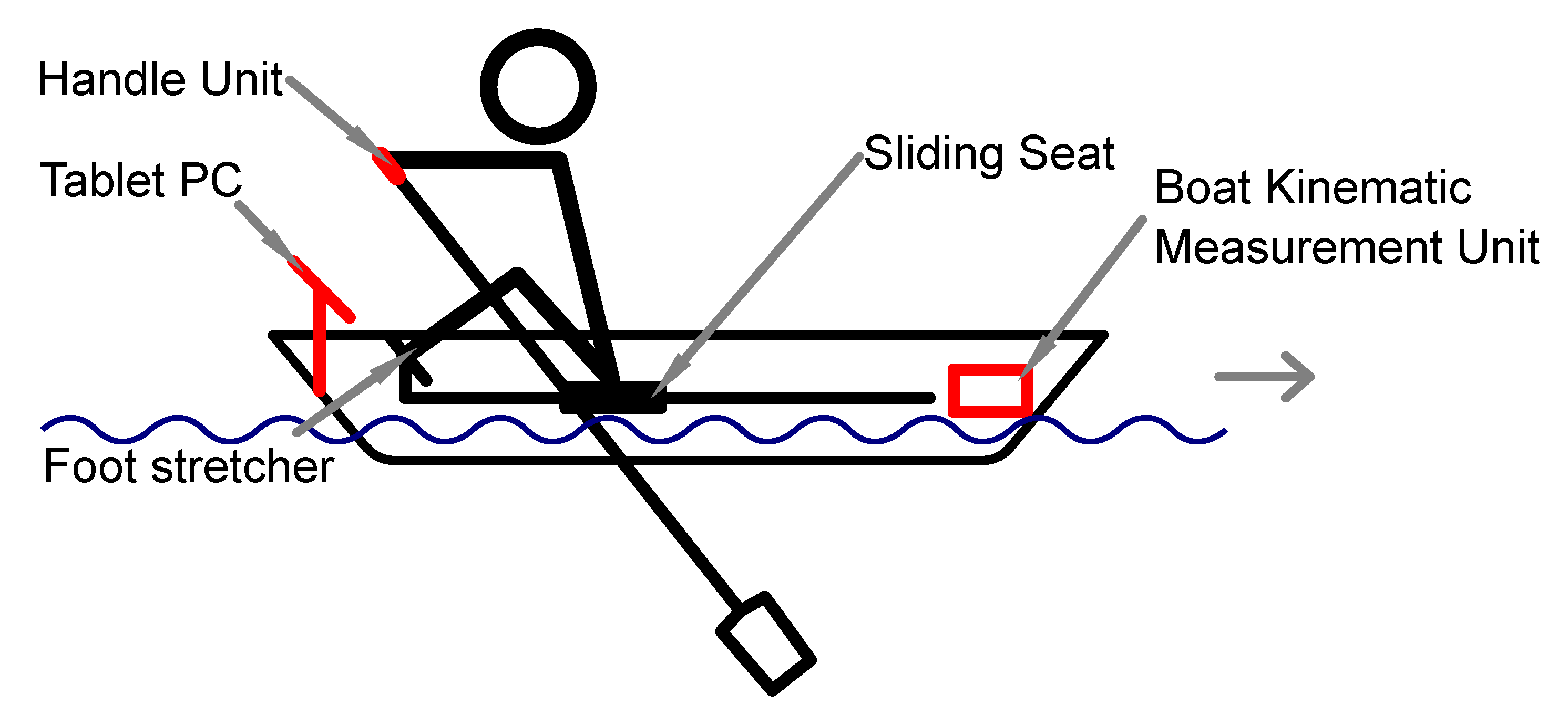A Wireless Rowing Measurement System for Improving the Rowing Performance of Athletes

|
OPEN ACCESS: Artigo disponível/Article available/Artículo disponible - ASSINANTE/SUBSCRIBER: Artigo para Assinante do periódico/Article for Journal Subscriber/Artículo para suscriptores de este periódico - PAY-PER-VIEW: Compre o artigo e leia/Buy the article and read/Compra el artículo y lee - IMAGE: Um sistema Wireless de medição de remo para melhorar o desempenho de atletas |
Keywords:
Rowing, Feedback Training, Motion Analysis, Surface EMGAbstract
The rowing technique is a key factor in the overall rowing performance. Nowadays the athletes’ performance is so advanced that even small differences in technique can have an impact on sport competitions. To further improve the athletes’ performance, individualized rowing is necessary. This can be achieved by intelligent measurement technology that provides direct feedback. To address this issue, we developed a novel wireless rowing measurement system (WiRMS) that acquires rowing movement and measures muscle activity using electromyography (EMG). Our measurement system is able to measure several parameters simultaneously: the rowing forces, the pressure distribution on the scull, the oar angles, the seat displacement and the boat acceleration. WiRMS was evaluated in a proof-of-concept study with seven experienced athletes performing a training on water. Evaluation results showed that WiRMS is able to assess the rower’s performance by recording the rower’s movement and force applied to the scull. We found significant correlations (p < 0.001) between stroke rate and drive-to-recovery ratio. By incorporating EMG data, a precise temporal assignment of the activated muscles and their contribution to the rowing motion was possible. Furthermore, we were able to show that the rower applies the force to the scull mainly with the index and middle fingers.
ARK
— Persistent identifier of the 2024 Edition OLYMPIKA MAGAZINE - VOLUME 2 ONLINE - NO. 002: ark:/40019/oly.v2i2
— Persistent identifier for this article: ark:/40019/oly.v2i2.9.g19
References
(1) Smith TB, Hopkins WG. Measures of Rowing Performance. Sports Medicine. 2012 Apr;42(4):343–58.
(2) McNally E, Wilson D, Seiler S. Rowing Injuries. Seminars in Musculoskeletal Radiology. 2005 Nov;09(04):379–96.
(3) Volker Nolte. Rowing faster. Champaign, Il: Human Kinetics; 2011.
(4) Gravenhorst F, Turner T, Troester G, Smith R.M, Draper C. Validation of a rowing oar angle measurement system based on an inertial measurement unit. In Proceedings of the 2013 12th IEEE International Conference on Trust, Security and Privacy in Computing and Communications, Melbourne, Australia, 16–18 July 2013; pp. 1412–1419.
(5) Johard L, Filippeschi A, Ruffaldi E. Real-time error detection for a rowing training system. BIO Web of Conferences. 2011;1:00044.
(6) Kleshnev V. BIOMECHANICS OF ROWING : a unique insight into the technical and tactical aspects of elite rowing. 2020.
(7) Tessendorf B, Gravenhorst F, Arnrich B, Troster G. An IMU-based sensor network to continuously monitor rowing technique on the water. In Proceedings of the 2011 Seventh International Conference on Intelligent Sensors, Sensor Networks and Information Processing, Adelaide, Australia, 6–9 December 2011; pp. 253–258.
(8) Kleshnev, V. Boat acceleration, temporal structure of the stroke cycle, and effectiveness in rowing. Proc. Inst. Mech. Eng. Part P J. Sport. Eng. Technol. 2010, 224, 63–74.
(9) Soper C, Hume PA. Towards an Ideal Rowing Technique for Performance. Sports Medicine. 2004;34(12):825–48.
(10) Kaya M, Minamitani H, Hase, K, Yamazaki N. Motion analysis of optimal rowing form by using biomechanical model. In Proceedings of the 17th International Conference of the Engineering in Medicine and Biology Society, Montreal, QC, Canada, 20–23 September 1995; Volume 2, pp. 1281–1282.
(11) Schwensow D, Hohmuth R, Malberg, H, Schmidt M. Investigation of muscle fatigue during on-water rowing using surface EMG. In Proceedings of the 2022 44th Annual International Conference of the IEEE Engineering in Medicine & Biology Society (EMBC), Glasgow, UK, 11–15 July 2022; pp. 3623–3627.
(12) Hermens HJ, Freriks B, Disselhorst-Klug C, Rau G. Development of recommendations for SEMG sensors and sensor placement procedures. Journal of Electromyography and Kinesiology. 2000 Oct;10(5):361–74.
(13) EmPower Oarlock, Order the most effective rowing training tool Now [Internet]. NK Sports. [cited 2024 Feb 22]. Available from: https://nksports.com/category-empower-oarlock/empower-oarlock#what-can-you-measure
(14) Lippold OCJ. The relation between integrated action potentials in a human muscle and its isometric tension. The Journal of Physiology. 1952 Aug 28;117(4):492–9.
(15) Pollock CL, Jones IC, Jenkyn TR, Ivanova TD, Garland SJ. Changes in kinematics and trunk electromyography during a 2000 m race simulation in elite female rowers. Scandinavian Journal of Medicine & Science in Sports. 2010 Dec 3;22(4):478–87.
_____________________
Artigo adaptado e traduzido para o português pelos editores de OLYMPIKA MAGAZINE para republicação, conforme normas de submissão do periódico. Versão original em: https://www.mdpi.com/1424-8220/23/3/1060 LICENÇA ORIGINAL E DA VERSÃO: © 2023 by the authors. Licensee MDPI, Basel, Switzerland. This article is an open access article distributed under the terms and conditions of the Creative Commons Attribution (CC BY) license (https://creativecommons.org/licenses/by/4.0/).
Published
How to Cite
Issue
Section
ARK
License
Copyright (c) 2024 Richard Hohmuth, Daniel Schwensow, Hagen Malberg, Martin Schmidt

This work is licensed under a Creative Commons Attribution 4.0 International License.






